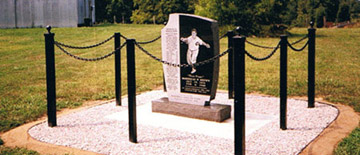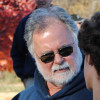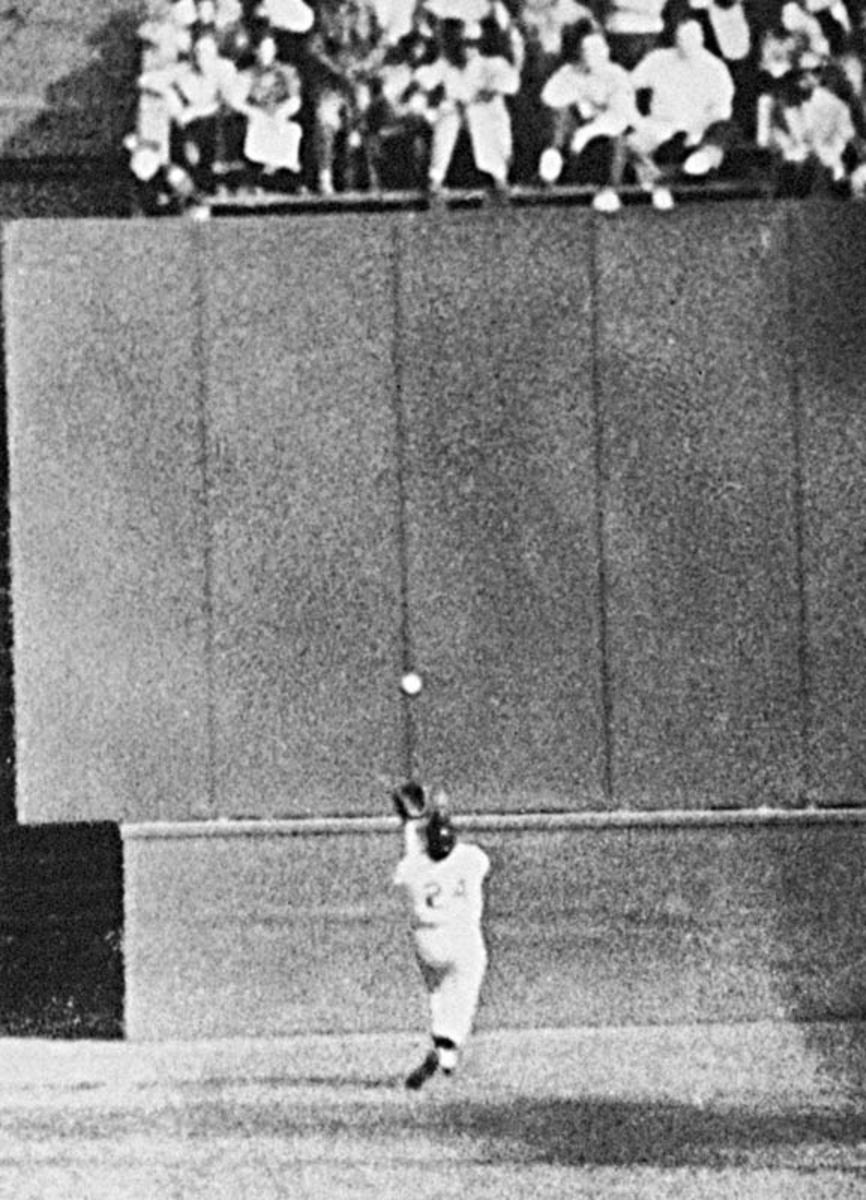Mordecai "Three Finger" Brown
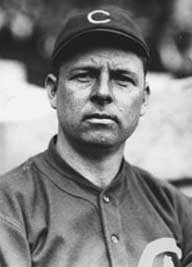
Mordecai Peter Centennial Brown was born October 19, 1876 in the farming community of Nyesville, IN. Prior to his birth his family had moved to Indiana from Kentucky. It was a large family and Mordecai had seven brothers and sisters. He was named after an uncle and his father and the name Centennial was used because 1876 was the centennial year of the United States.
The Accident
At the age of seven Brown lost most of his right index finger to the knives of a corn shredder in a farming accident. Then, while his injured hand was healing, he fell while chasing rabbits reinjuring his hand a second time. This time he broke his remaining fingers. By the time all was healed he was left with a stump for a right index finger, the middle finger was bent at an obtuse angle, and his little finger was paralyzed. Brown’s family did not see his deformity as the end of the world, he would still be able to grip a coal miner’s pick and shovel so his future was intact. He would simply need to adapt and overcome.

The Company Teams
The fact is he did spend time in the mines as a teenager and another nickname he was known as was “Miner.” In those days a lot of the men who worked the mines also played for the company baseball team. It seemed as if each mining town had its own team and over the years Brown played for Clinton, Shelburn and Coxville. Brown worked in the mines and played for the company teams for six years. He was five feet ten inches tall and weighed 175 pounds and was a switch hitting third baseman.
He was playing for Coxville in 1898 when he was called upon to fill in for the regular pitcher. The pitcher’s absence turned into a revelation for Brown; his deformed hand allowed him to throw a pitch that can only be described as bewildering. As an infielder he had always had problems making throws; it was difficult for him to throw a straight ball with his grip. As a pitcher, you never want to throw a straight ball.
He was able to grip the ball securely with his clawed middle finger and the one next to it and wedge the stump of his index finger in behind the ball giving it an unusual spin when he released it. His pitch would break down straight over the plate. It was as if he had the perfect hand for throwing a curve ball. Ty Cobb described Brown’s curve ball as “the most devastating pitch I ever faced.”
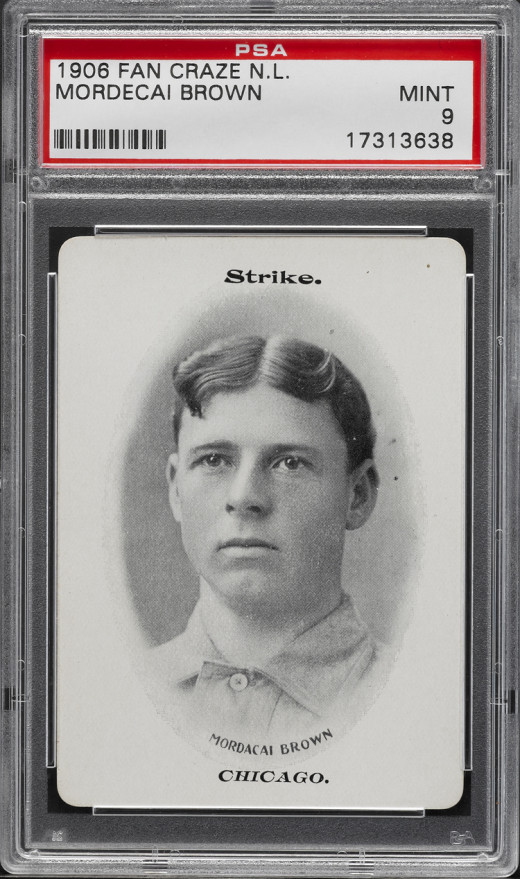
Major League Baseball
In 1901 Brown played semi-pro ball for the Terre Haute Tots in the brand new Three-I league. The Tots were the first champions of the new league led by Brown and his 23 – 8 record. The next year he pitched for Omaha in the Western League and went 27 – 15. He was the staff workhorse finishing every game he started. Up until that season teammates had called him Brownie or Miner; reporters began to call him Three Finger as they believed it to be a catchier moniker.
In 1903 Brown joined the St. Louis Cardinals. The Cards were not a very good team that year finishing in last place 46 ½ games behind the National League champions. Brown’s rookie record of 9 – 13 is not impressive looking back on it as a stat on a piece of paper; however, at the time, his mastery over the batters was obvious, his 2.60 ERA led the team and he was tied for most wins with a veteran pitcher who, at that time, was considered the team’s best.
He had the first of several duels with Christy Mathewson that season. They met on July 9 and both pitchers took shutouts into the ninth inning. The Giants got to Brown for three runs in the ninth and beat the Cardinals 4 – 2.
Following the 1903 season Brown was traded to the Chicago Cubs. He would become the ace of a team that had an outstanding pitching staff. From 1906 through 1910 the Cubs put together the greatest five-year record of any team in baseball history.
Mordecai Brown was one of the best National League pitchers of the early 20th century. With 239 victories, Brown's winning percentage was a lofty .648. He posted six 20-win seasons and rivaled Christy Mathewson as the best in the league, defeating Mathewson on nine consecutive occasions. Brown's Chicago Cubs won four National League pennants and two World Series championships.
Brown’s best year was 1906 when he went 26 – 6 for a .813 winning percentage. He threw nine shutouts and had a 1.04 ERA, still one of the best single-season ERA’s in baseball history. The Cubs won 116 games in 1906 but lost the World Series to the White Sox. Brown was 2 – 1 in the Series. The Cubs problem was not pitching, they were known as the Hitless Wonders.
Brown talks about October 8, 1908 in John Carmichael’s My Greatest Day in Baseball. On that date the Cubs met the Giants in a playoff game to determine the champion of the National League. The game was necessitated because of one of the most famous plays in baseball, “Merkle’s Boner.” In the ninth inning of a September 23rd game between the two teams Fred Merkle failed to touch second base on a play that should have scored the winning run for the Giants. Johnny Evers realized this and called for the ball. As fans were overrunning the field he stood on second base, holding the ball and jumping up and down. He was finally recognized by the umpires and Merkle was declared out thus nullifying the game winning run. Due to the near riot that ensued the game was declared a tie, to be replayed if necessary. It was now necessary.
Played at the Polo Grounds before a standing room only crowd the Cubs starting pitcher didn’t survive the first inning. Brown came on in relief and out pitched Christy Mathewson going on to win his 29th game. Besides this game, Brown had either started or relieved in 11 of the Cubs last 14 games. The Giants’ fans believed the pennant had been stolen from them and were abusing the Cubs’ players to the point that they required a police escort from the stadium in paddy wagons.
Brown’s final game in the major leagues was September 4, 1916. It was also his final time to go against Christy Mathewson, now player-manager of the Cincinnati Reds. The day turned out to be the last big league performance for both men. Mathewson won that day but overall Brown bested him 12 – 11 with one no decision in their 24 match-ups.
Retirement
Following his retirement, Brown returned to his home in Terre Haute, Ind., where he pitched, coached and managed in the minor leagues for more than a decade. He also ran a filling station.
In his fourteen years in the majors, Brown won 239 games and lost only 130. He led the league in wins twice, 1909 and 1910, and led the league with most shutouts in 1906 and 1910. He had a lifetime ERA of 2.06 and from 1905 to 1910 he posted 20 or more wins--numbers sparking the attention of the Hall of Fame Committee on Baseball Veterans. He was elected in 1949. Brown suffered from diabetes and the effects of a stroke. He may have known he was being considered for election, but he didn't live to see it because he died on February 14, 1948 in Terre Haute at the age of seventy-one. He was survived by his wife of 45 years, Sallie. They had no children.
